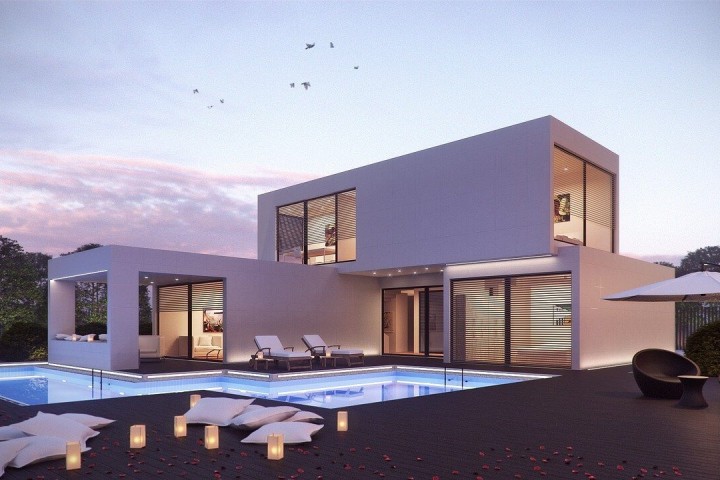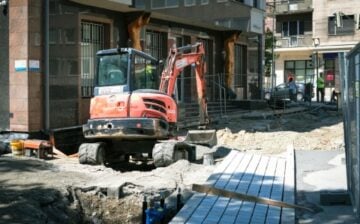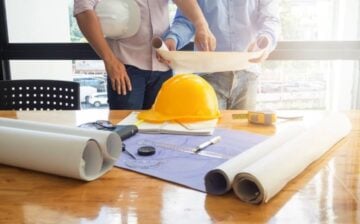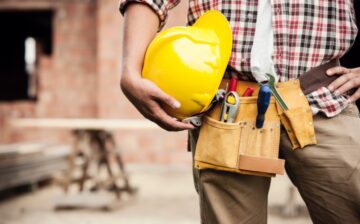
The construction industry is large, but it has suffered low growth rates for the past 20 years. Although it comprises 14% of the global gross domestic product (GDP), it is only growing at a rate of 1% per year. The current health crisis adds to why construction is not reaching new heights, along the perennially skyrocketing costs that result in reduced earnings before interest and taxes (EBIT). There is no expectation of recovery for the construction industry unless something new can excite families to build new homes. For now, it seems that modular construction is the answer to the dying industry.
What is Modular Construction?
Modular construction uses modules or individual sections manufactured off-site in a controlled manufacturing facility and assembled on site. It uses assembly line production processes and standard building materials in creating each module. It is not a new concept, because its use dates back to the 17th century when colonists shipped houses to America for re-assembly.
Technology has provided for some construction changes, but the manufacturing process is still in a controlled factory for enhanced quality control and reduced waste and costs. Industry leaders believe that modular construction is the appropriate choice for the housing needs of all countries. It uses steel frames for greater strength and offers design flexibility, fire resistance, and much more.
Skyrocketing real estate prices and rising student loan debts make homeownership challenging for a young professional. However, modular housing makes it possible to shop for a home the same way people buy coffee or a hot tub. Many developers are not keen on building a trailer park because these houses are not a typical residence. The uk best essays also point to pre-fabricated homes as the future of housing.
Expected Market Growth
According to PR Newswire, the global modular construction market will grow by 5.7% from $85.4 billion in 2020 to $107.9 billion in 2025. The housing shortage, as well as labor force shortages, will make the growth possible.
Solving the World Housing Crisis through Modular Housing
Mission Bay in San Francisco has a 140-unit housing complex for the homeless. Construction began in 2017, and it will finish by 2021. Aside from creating homes, the project also created jobs. Minneapolis has “Mod42,” a 30-unit apartment complex at a remote location. It is one of the first modular constructions in the Midwest.
Since the 2008 housing crisis, there has been a surge in the number of renters, including millennials, causing rents to increase significantly. Rising costs of materials are also to blame. Modular construction allows shorter building time schedules to boost cash flow. Tenants can move in sooner.
Modular housing may also use technological breakthroughs such as 3D printing. Creating parts and cutting down delivery times using fabrication technologies on-site can substantially boost the pace of construction.
Advantages of Pre-Fabricated Construction
Modular housing can appreciate or depreciate in value similarly to a traditional home. Mortgages and loans are also the same. However, unlike mobile homes, modular houses have a solid foundation. Building construction makes up 39% of all carbon emissions worldwide; 40% of its materials find their way in landfills. On the other hand, modular homes use less energy and are more eco-friendly. Recycling and deconstruction are straightforward at the end of their lifespan.
It is also possible to apply for tax credits, because modular construction is a green type of building. Unlike stick-built homes, modular construction lasts longer and can withstand a maximum of 180mph of wind. They are also much faster to build: it also takes anywhere between four and six months to build a traditional home; on the other hand, the construction of a modular home can complete in ten weeks.
Buying a Home for 66% off the Total Amount
On average, a residential property can cost between $2 million and $3.5 million. The average price for a modular home is from $600,000 to $1 million. A conventional home has around 1,000 to 3,000 square feet of space. On the other hand, modular housing offers between 2,000 and 3,000 square feet.
Interested homeowners can choose a design that suits their budget. A typical modular house can cost $900,000 for 3,000 square feet or around $63 per square foot. The median cost of a traditional residence can range from $200 to $500 per square foot.
Why Consider Buying a Modular Home
Because more people are now moving to suburban areas, real estate prices are rising. Even if the median home price is around $270,000, houses in some areas sell for more than $2 million. Money is flowing, and interest rates are down. Mortgage rates are also at their lowest, and cheap money is conveniently available.
It is time to use these rates with home loans and tax write-offs to invest in modular housing, which is sells at a discount with a potential to make money. Buying a modular home as an investment saves money and may also earn more money because it is a growing market.
Looking Ahead: Modular Construction Is It
Buying factory-built houses may seem weird for some people. However, it is possible there will be planned modular communities in a couple of years. Investing in them today can generate rewards in the future. Using mass-production technology to build a home is no longer far-fetched.
We hope you found this blog post The Future of Real Estate Is Modular, useful. Be sure to check out our post Manufactured Home Parts – Where to Start for more great tips!
Have Experience in the Moving Industry? Want an Additional Income Stream? Work With All Around Moving!
Make good income partnering with us. Click here to learn more.





